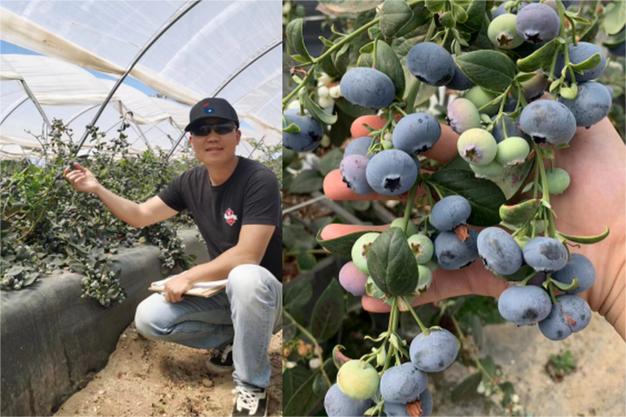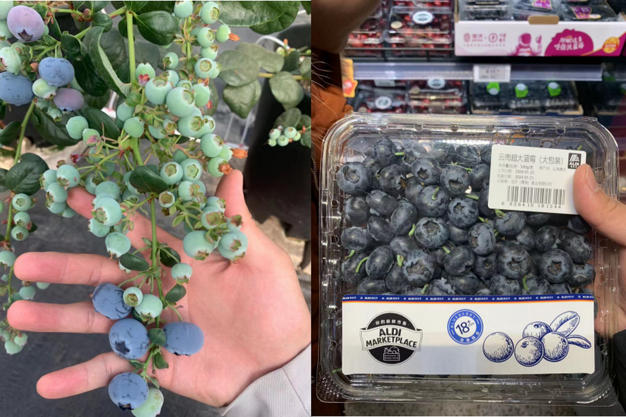Imported blueberries dominate the Chinese market, primarily sourced from Peru and Chile, with availability spanning from the latter half of the year until around the Chinese New Year, though this year's harvest was prolonged due to the El Niño phenomenon. Conversely, Chinese blueberries are produced year-round. FreshPlaza recently engaged in a discussion with Mr. Huan Zhang, founder of Twinkle Star Berry Co. Ltd., regarding the distinctive attributes of Chinese versus imported blueberries, as well as the developmental trajectories and prospects within the Chinese blueberry sector.

"The intense competition within the Chinese market arises from domestically grown blueberries"
Mr. Zhang articulated that the competitive landscape of blueberries in China predominantly revolves around domestically cultivated varieties. He elaborated, "Peruvian and Chilean blueberries primarily target export markets, leveraging geographical and climatic advantages. The intense competition within the Chinese market arises from domestically grown blueberries, fueled by expansive planting areas across China, signifying substantial competitive pressures."
Analyzing the unique traits and merits of Peruvian and Chilean blueberries, Mr. Zhang noted, "Peruvian blueberries, necessitating early picking for export, excel in cold chain logistics, albeit challenging direct taste comparisons with Yunnan blueberries. However, their production season, spanning from June to February, effectively supplement China's lower blueberry output periods."
He continued, "Chilean blueberries, entering the Chinese market in November, face competitive challenges against Yunnan blueberries already available. In terms of varieties, Chilean offerings encompass northern highbush and traditional southern highbush types, while Peru boasts numerous superior new southern highbush varieties, distinguished by firmness, size, and flavor."
Discussing the comparison between Chinese and Peruvian blueberries, Mr. Zhang emphasized the disparate market targets and operational models, yet highlighted notable considerations. "Yunnan blueberries are presently the only comparable counterpart to imported varieties, exhibiting exceptional quality. However, Peru may hold long-term advantages owing to lower labor costs, potentially impacting price competitiveness. Moreover, Peru boasts a diverse range of varieties, fostering a more thriving blueberry market."

"This will be poised to make significant inroads into the Chinese market."
The industry's development trends encompasses three key facets: cultivation, consumption, and variety. Mr. Zhang elucidated that China's blueberry sector is currently experiencing growth in both supply and demand, signaling substantial room for industrial advancement. Moreover, the introduction of novel varieties and business systems holds promise for the Chinese blueberry market's future expansion.
"Cultivation-wise, Yunnan has witnessed significant growth, while Shandong is modernizing its cultivation techniques and varieties. In Shandong, for instance, northern highbush blueberries are cultivated using substrate methods, with solar greenhouse areas expanding, thereby enhancing the supply side."
"On the consumption front, blueberries are experiencing a rapid popularity surge, with data indicating a staggering 40% demand growth rate in China over the past five years. The fruit's appeal has permeated third and fourth-tier cities, penetrating diverse sales channels, alongside a corresponding reduction in selling prices."
Regarding varieties, Mr. Zhang anticipates that Yunnan blueberries will spearhead the development of newly introduced varieties on a large scale. Notably, Sekoya, an influential business system, is poised to make significant inroads into the Chinese market.
With globally acclaimed northern highbush varieties, Sekoya's presence is expected to catalyze competition and opportunities within the Chinese blueberry landscape. Shandong's production areas may witness the adoption of representative products like Fall Creek and Sekoya, ushering in novel prospects for both Shandong and Anhui.
Following his completion of a Ph.D. in small berries, Mr. Zhang Huan established Twinkle Star Berry, offering technical and business consultancy services to domestic and international berry firms. Committed to fostering exchanges and cooperation between Chinese and foreign berry enterprises, Mr. Zhang endeavors to propel the industry toward greater heights.
